This is part 8 in Lenoon’s ongoing series. If you missed part 7, you can find it here.
I spend too long thinking of titles for these articles, you know. It takes me about as long to decide on one as it does to paint one 28mm Middle Guardsman, so for this time only, I’ll share some of the titles that didn’t quite make it:
The Assassination of the Hero Toussaint by the Coward Napoleon
Fok ou, Rochambeau
Strong Dessalines Energy
Rochambeau is a dechay sou diri blan
They could be Heroes (just for one Ay(iti))
Given that Ayiti Cherie made the cut, that’s six titles, six Middle Guard – a whole base – that could have been freed from my painting queue and jammed into the over-stuffed box of 28mm.
Anyway, enough digression. This month I have been digging in to one of the most bitterly fought, strategically brilliant and hugely significant campaigns of the Napoleonic era. No surprises as to what that was.
Haiti, Grave of Empire
I don’t know how to refer to what is variously called the Haitian Revolution, the War of Independence, or the Haitian Uprising, because it’s usually divided into pieces – the Slave revolt of 1791-1793, then War between Haitian France and Britain, Spain and the Bourbons until 1802, then Napoleon against the Haitians until independence in 1804 and far, far beyond. Whatever it is, and whatever the period, it’s a story of part of a world spanning illegitimate, disgusting system, capable and encouraging of every cruelty and crime humans have ever known, being overthrown, crushed and ground into dust by the very men and women it had oppressed. Depending on the historian you’re reading, it was a revolt that turned into a war for independence or it was, from the very first day in 1791, a war for independence and the destruction of the white cultural and economic hegemony that created, maintained, enjoyed and still profits from, slavery. It is a war where the economic, social and moral repercussions are still felt today, and where the system perpetuated by the “losers” continues to grind the independent republic that emerged into the ground for the benefit of the imperial centre.
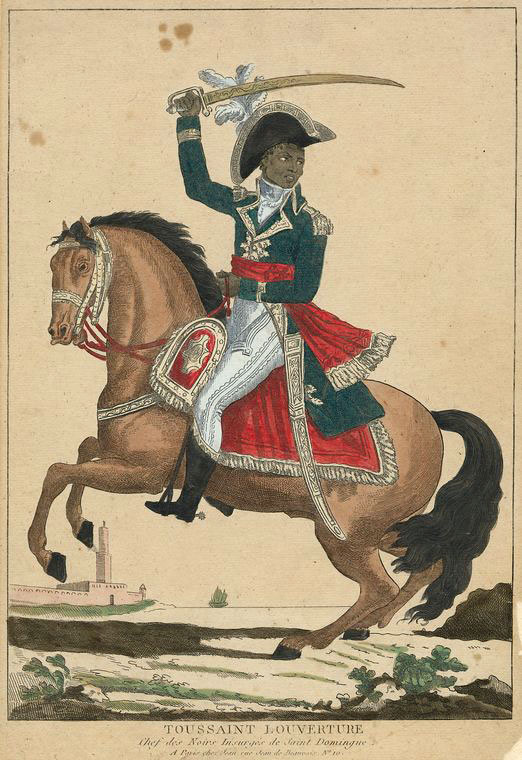
It is absolutely stunning to me that it isn’t an incredibly popular wargaming setting. We’re comfortable, as wargamers, engaging in all sorts of horrendous conflicts as games – just look at the incredible popularity of the Peninsular war as a setting – so it’s not that people don’t like playing in conflicts filled with horror. The War Against Slavery fought mainly by White People is enduringly popular too. Let’s call this out right now: It’s racism, right. It’s literally and solely the industry (and our wider society) not being interested in telling a black story, particularly one where the hero nations of Napoleonic wargaming – France and Britain – get beaten by men and women who tore off their literal and metaphorical shackles with a cry of “Liberty or Death!”
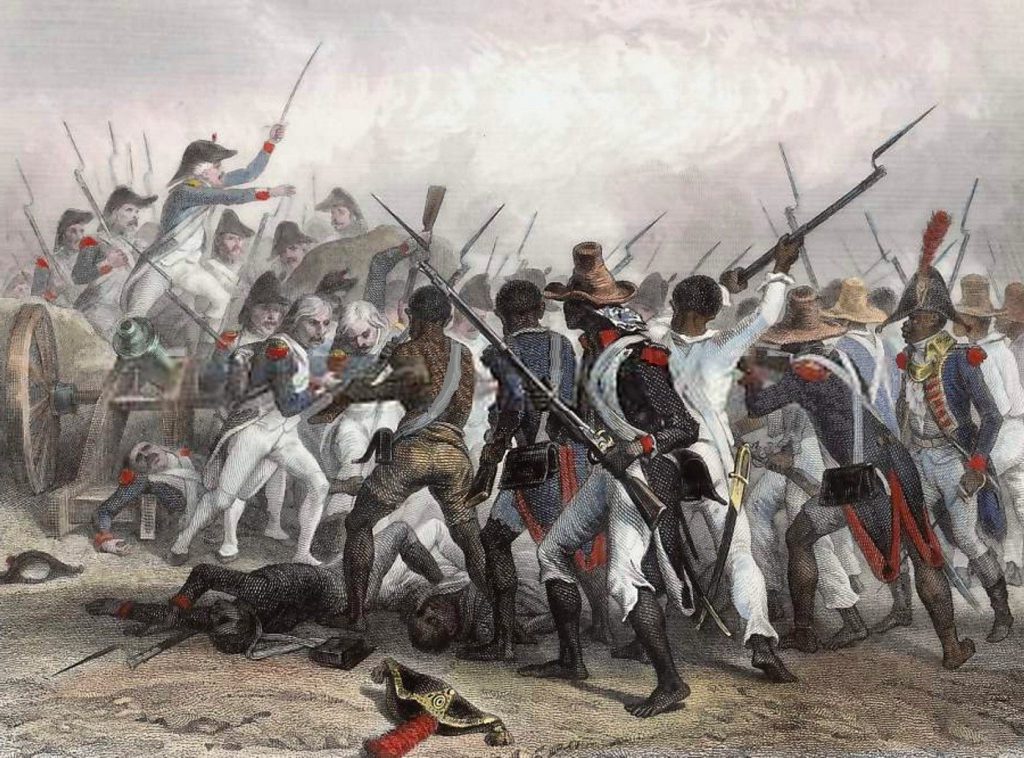
As a result, its not my story to tell, for so, so many reasons. It is a Haitian story, a Caribbean story, an African story. But most importantly it’s a Black story, and I’m not going to try and tell that. Black Spartacus and Black Jacobins tell the story of Toussaint Louverture far better than I – and unlike my previous fairly flippant summaries of various Napoleonic heroes, this one deserves his own, masterful telling. I’ve also been reading a fair bit of Marlene Daut to gather some of the wider context of the Haitian revolution, and how it has been variously understood, explained, reasoned away and dismissed – but also mythologised and lionised. I am not a historian, and I’m definitely not someone with the lived experience that must underpin any attempt to understand slavery narratives. The most similar figure to me that features in this story is probably Marcus Rainford, whose book An Historical Account of the Black Empire of Haiti has been an interesting read. I am a wargamer, so my engagement with this history comes through that lens – so for me this is trying to embody some of the strategic, tactical and moral heroism of Toussaint, Dessalines, Marie-Jeanne and Sanite in tiny models of plastic and pewter.
Modelling the Haitian Army
I’m going to try and make Toussaint Louverture’s army, a force that he wielded masterfully and personally against every Imperial power operating in the Caribbean for ten long and bloody years. Unlike literally every other conflict in the history of the known universe, there aren’t a huge number of highly detailed, well illustrated and exhaustively researched books detailing the kit and dispositions of the men and women who fought in the Haitian Revolution. This is despite the fact that for long stretches of this time many of them were fully kitted out in French line uniforms, tropical kit was “a thing” at the time and they were extensively supplied and funded with British, Spanish and French equipment. Toussaint fought in every concievable “Napoleonic” style, and the Haitian Army – at times a rebellion, at others a recognised and “standard” French Army – was disciplined and tactically flexible force. It was, at times and in places, as large (30-60,000 soldiers) standardised as any European army – much, much moreso than many contemporary and modern authors would dare to recognise. I simply cannot think why it’s been so under researched by the assembled military historians of the world, who have catalogued every minor skirmish since the Peloponnesian war to an insane degree.
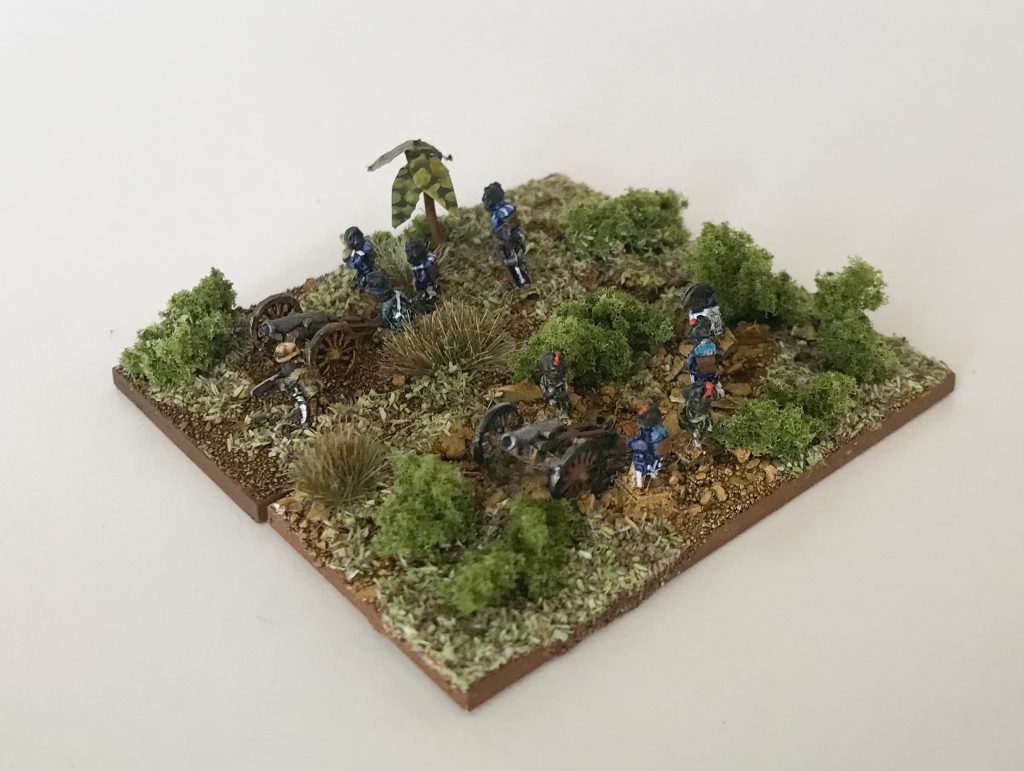
Modelling the Haitian Army (I’m going to include all the periods of the revolution – including the ones where it was very much the French Army on Haiti – in that name), is therefore much like modelling any other army. I need line troops in early Napoleonic period uniforms, Guns, and light and medium cavalry. As it was kitted out in various degrees of “tropical” or “colonial” uniform, I don’t need the iconic bearskins and greatcoats of my Imperial Guard. As multiple (often simultaneously and competing) colonialist empires funded the army, it can include multiple different uniform styles. It’s also got to have a solid contingent of irregular troops – the “Marons” who formed the backbone of the early conflict, freed slaves after emancipation, guerillas, veterans and women in the final conflict against France – that need to look irregular, but equipped and able. This isn’t a horde of untrained slave soldiers, or a bundle of offensive stereotypes masquerading as an army, they’re a solid military force that knows what it’s doing and does it – again and again – against Spain, Britain and France.
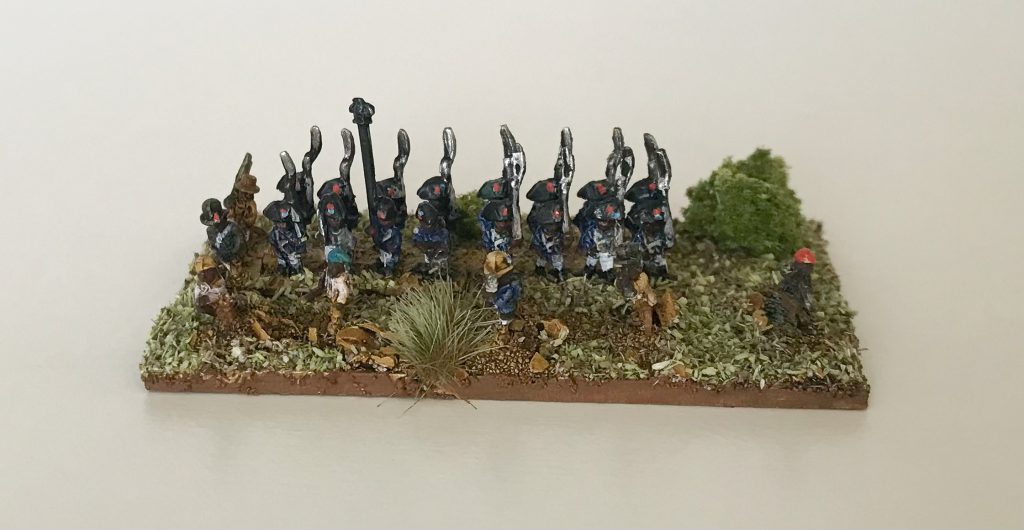
Unfortunately, and predictably, Haitian 28mm Napoleonics are thin on the ground. Trent Miniatures (now sold by Skytrex) has a set which largely scans as “mostly inoffensive”, but after 6 months of this, the idea of doing an all metal 28mm army is completely horrifying. After discovering the king of scales (6mm) last time, this army will be in 6mm, and as a result will represent a fairly grand size of army. The standard basing for Black Powder at my local gaming club is 24 men on a 25x50mm base, and I’m therefore looking at 48 men in the same area of table as 6 of my Guard. So this army will be the Soldiers of the Revolution in some of their climactic battles – perhaps Palm Tree Hill, the storming of Leogane or the Siege of Fort Churchill.
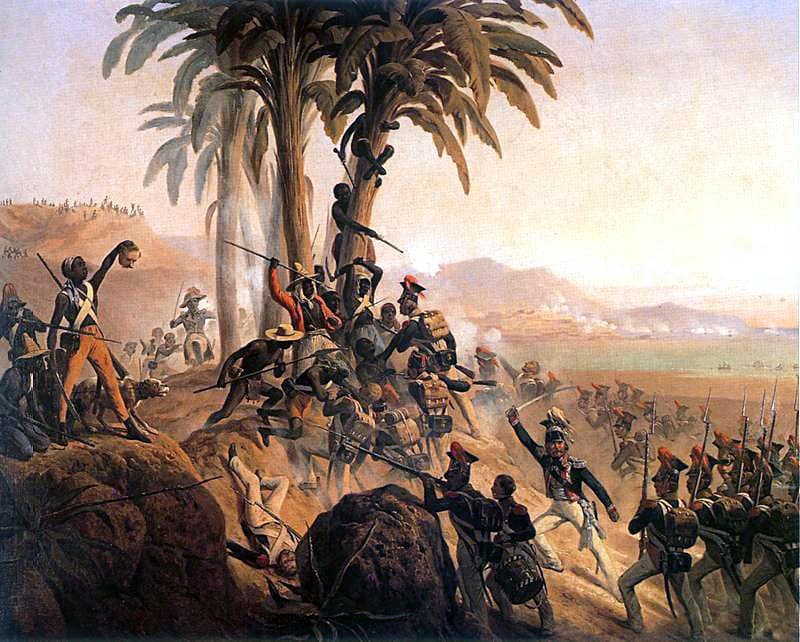
For this first wave, Baccus 6mm provided all of the models, mainly in their French line range. To add some of the more irregular troops I’ve added some Spanish Guerillas, and that seems to be the closest feel to what I’m after. The irregular troops have a good range of interesting poses that can be added to line bases to give them some visual variety, or used on their own to show the devastating and undetectable close-range irregular action that the imperial powers found impossible to defend against. Painted up, I think these look pretty great, and give the clear look of line troops supported by irregular forces.

Expanding out from here I’ll use models from Baccus’ war of 1812 range, adding more skirmish and light troops to the solid base of their French line strips. Going back to the Seven Years War for horse gives lots of broad-brimmed hats which will make for a nice Tropical kit look. I’m scouting other manufacturers for appropriate models – particularly for cavalry – though diving into 6mm manufacturers and their extremely individual websites is definitely a topic for a whole how-to article in itself!
Painting and Basing
I’ve not painted and based 6mm troops before and if you’re in the same boat as me, it can be pretty intimidating. Luckily, the size and position of these guys – and my basing scheme – means you can get away with quite a few shortcuts. It’s a very quick process overall:
Step 1:
These models don’t need a lot of cleaning, but there’s occasional bits of flash to deal with and mould lines on some pieces. A very quick cleanup – and for the skirmishers separating out miniatures on strips – is followed by a heavy sand basing using my sharp sand mix.
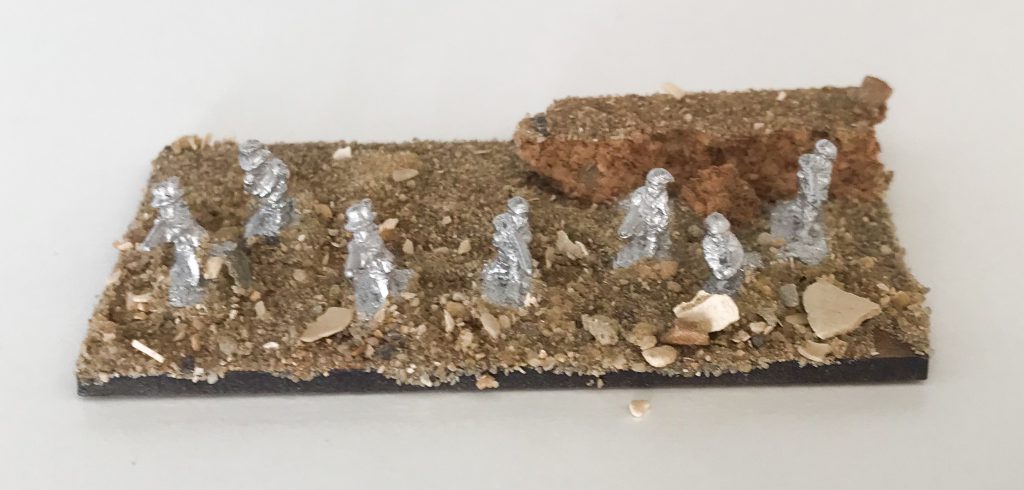
Step 2:
I just hit them with a wraithbone spray because it’s the only primer I have.
Step 3:
Snakebite leather liberally diluted with medium is slathered on the whole thing. Once it dries, I pick out any gun barrels and bicornes or similar in black.

Step 4:
Big block colours are added in – straight Ultramarines Blue contrast and boltgun metal for guns and swords. On the skirmishers, I go and pick out a few shirts or trousers in white, grey, green and off-white for variety.
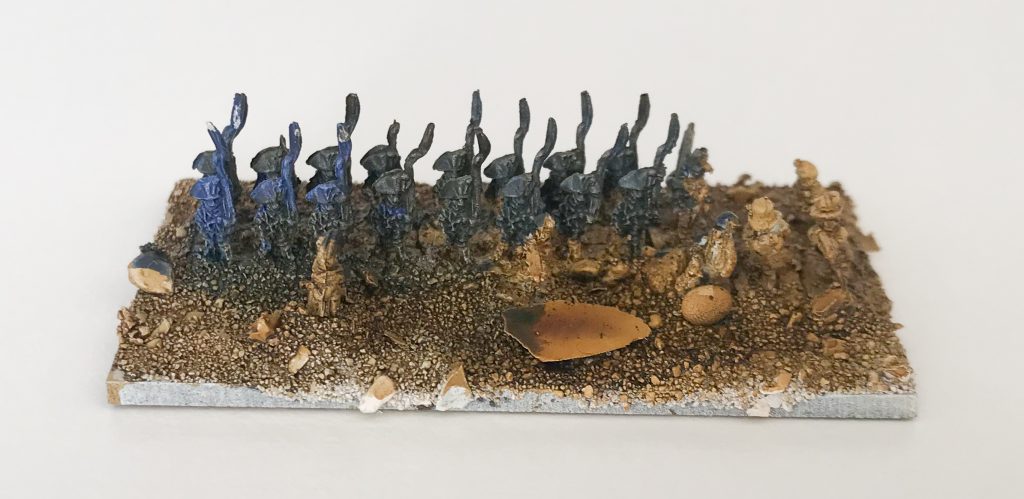
Step 5:
Details added – faces are mostly dabs of Catachan flesh with occasional more varied skintones, bayonets are given a bright silver highlight. On the back, backpacks get a brown dot and a light blue one to represent bag and coat-roll (if I could get French line minis without these I would tbh). Trousers and cross-belts get off-white.

Step 6:
I add big globs of PVA and add my brightest flock (Element Games’ Rambling Fields), pinches of clump foliage with lots for guns and skirmishers and little for line units. If the flock doesn’t look nice enough, I’ll add a second go. Occasionally step 6 comes before step 3 – particularly when I’ve just spilled flock everywhere and have some bases on hand.
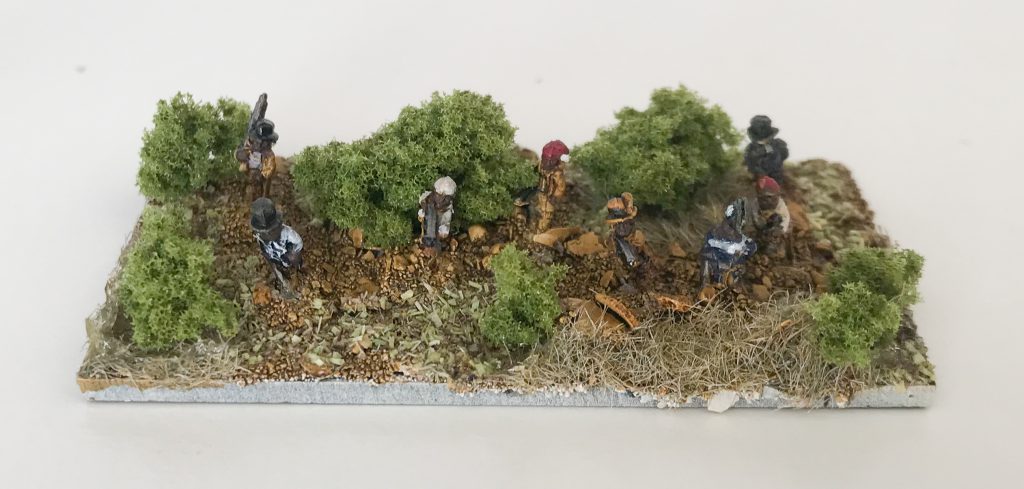
Detailing bases has been fun, with a couple of attempts at making my own trees. Once I crack this, I’ll share how it’s done but at the moment the results are….. mixed.
Conclusions
Hopefully this army will grow and expand – and I’ll get better at making, painting and basing at 6mm. Until then, though, I want to think and talk more about Haiti. The story of the revolution is fascinating, and the heroism of the people impossible not to admire. But I’ve barely touched what happened there in the late 18th and early 19th century, and I’m determined not to let that stand. Unlike most of these articles, I’ll not separate out badassery and the reading, because it’s all up there already, the tip of an iceberg of imperialist crime and heroic resistance.

What I will say is that Haiti is still absolutely paying for the revolution. For destroying slavery in the colony and ending French imperial hopes in the Caribbean and North America forever, for rejecting the very concept of a colony since its foundation – Haiti has been continually and deliberately targeted and crushed by the powers it fought against. France extorted 150 million francs from Haiti in payment for “acknowledging independence” – a crippling level of debt that was financed through European banks and was formally repaid in 1947. The US recognised the country as independent only in 1863 (I wonder why…), and invaded in 1915 (and again in 1994) in a good ol’ fashioned episode of hideously violent paternalistic colonialism, siezed the bank and forced the Haitian economy into full on “paying the french” mode, and, of course, supported an anti-communist coup in the 50s, and paid for various junta madmen and death-squad leaders in the typical sordid tale of US foreign policy. Even the supposed Peacekeepers used the nation as their own private brothel for much of the 00s. Demands for reparations almost certainly led to the 2004 coup – the sins of Napoleon very much still visited upon the Haitian son.
Haiti, at the time of writing, is the poorest country in the Western Hemisphere and has little to no functioning government, riven by assassinations and the instability born of successive coups d’etat. Two centuries of imperial powers are, and probably will continue to for a long, long time, determined to stay involved in Haitian politics.
I’m keen to learn more, and particularly to learn more from Caribbean authors and People of Colour in the wargaming scene. Please let me know if there’s anything I should be reading, listening to or otherwise learning from – and especially if this is a bad, bad idea altogether.
Have any questions or feedback? Drop us a note in the comments below or email us at contact@goonhammer.com.


